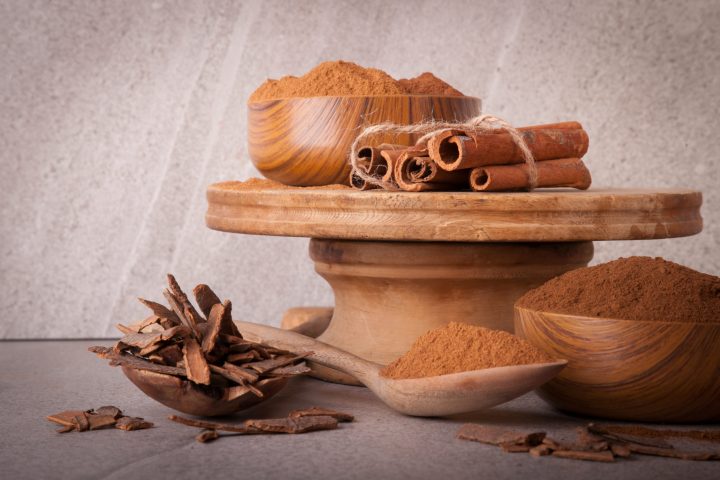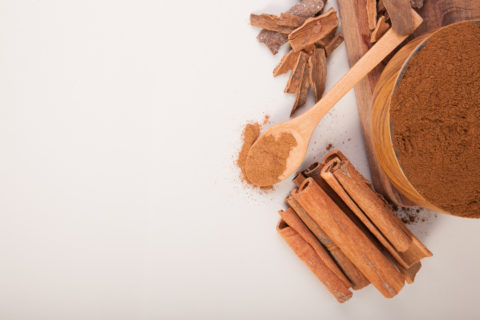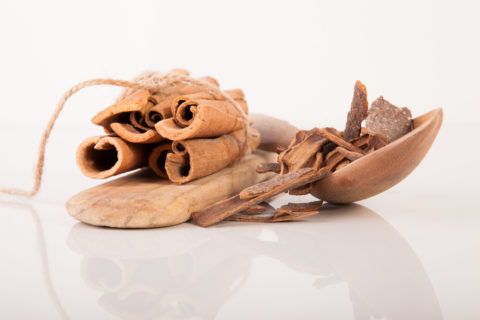MAIN INGREDIENT
Cinnamon & Cassia, cousins in spice

If you thought cinnamon and the product often marketed in South Africa as cassia were the same thing, you’d be barking up the wrong cinnamomum tree.
Being able to tell the wood from the trees in the world of cinnamon and the variety of cinnamon known as cassia is a bit of a minefield. The cinnamon that is regarded as “true” comes from the cinnamomum verum tree, whereas the cinnamon very often called cinnamon but which is actually the cassia variety is from the cinnamomum cassia tree.
This column accompanies this recipe
But if you’re familiar with both the cinnamon called cinnamon, in Cape spice shops, and the darker, harder and thinner bark often labelled cassia, you’ll know that they are not precisely the same thing. Similar though they are in smell and flavour, cassia is a tad less subtle. To confuse matters further, cassia is often called “stick cinnamon” at the Cape: those broken bits of “cinnamon” the colour of dark oak.

(Photo: Louis Pieterse, Kudu Studio)
Wikipedia tells us that cinnamon “has been known from remote antiquity” (it was used to embalm Egyptian mummies). So it’s a bit of confusion that goes back a very long way: “It was imported to Egypt as early as 2000 BC, but those who reported that it had come from China had confused it with cinnamon cassia, a related species. The online encyclopaedia explains that cinnamon was “so highly prized among ancient nations that it was regarded as a gift fit for monarchs and even for a deity; a fine inscription records the gift of cinnamon and cassia to the temple of Apollo at Miletus.”
Cinnamon and cassia, note. Cinnamon verum comes from India, Sri Lanka, Bangladesh and Myanmar, cinnamon cassia from China. In certain countries, including the United States, cinnamon and cassia can both legally be called cinnamon. Not so in the UK, where cassia must be labelled as such. In South Africa, in my own living memory, curled cinnamon sticks were always labelled cinnamon and the broken, thinner, darker bark was labelled cassia. This week in my local supermarket I found both kinds labelled cinnamon, even by the same brand; yet even the naked eye can see the difference both in hue and texture.
My Cook’s Guide to Asian Ingredients is clear on the difference. Cassia, AKA Chinese cinnamon, comes from the bark of a tree in the laurel family (as is the Sri Lankan tree) and “is harvested in much the same way as cinnamon, but the bark is not as fine, so although it curls, it will not form the fine quills we associate with cinnamon”. In fact it’s the inner bark that becomes the delightful cinnamon quill. In Sri Lanka and elsewhere where the “true” cinnamon tree grows, however, “after three years the branches are cut off and a long incision is made in the bark, so that this can be lifted off”. While drying in the sun, the bark curls into the beautiful quills we know and love. There is often a human helping hand in this process but many sources say it curls naturally.
Another tome I have to hand, The Indian Pantry, remarks that cassia is “much harder and coarser” than cinnamon and that while the smell is similar it is less pronounced and the taste is woody and bittersweet.
In the original version of this I wrote that the spices are more or less interchangeable, especially when used in Indian curries and other robust dishes. I’m happy to stand corrected: A reader who farms cinnamon in Sri Lanka and has a UK business called Cinnamon Hill, Rupert Beeley, has written to say that cinnamon and cassia are “easily distinguishable, by taste and scent as well as looks, and offer quite different flavours”. He adds that he would “probably use cassia cinnamon for a cinnamon rolls, for that bold, sweet cassia taste, but I’d definitely grate fresh Ceylon cinnamon onto my apple crumble, for its more subtle, citrusy flavour”.
Rupert send me a video of cinnamon being peeled at Top House, his hilltop cinnamon plantation near the sea on Sri Lanka’s southern coast. Fascinating… He says that “video star Samantha (a man’s name here) is our head peeler. He’s a master peeler, which is a big deal around here.” Just look at the beautiful colour of the fresh cinnamon bark:
Vietnamese cassia-cinnamon is a related and similar variety and an ingredient of many of the Vietnamese soups called pho. Chinese cinnamon (the darker cassia bark) is one of the ingredients of the spice mix known as Chinese fivespice along with fennel, star anise, cloves and white pepper (the last sometimes being substituted by Szechuan peppercorns or ground ginger). Cinnamon is also used in a traditional Lebanese spice mix. Sinfully moreish Greek cinnamon cookies called koulourakia lathiou are made with olive oil, cinnamon and love. The spice abounds in Moroccan cuisine, from Moroccan cinnamon chicken to an orange salad made with orange blossom water and cinnamon.
And those coiled cinnamon rolls with a cream cheese frosting, who doesn’t love those? And Argentina’s fabulous churros, hot, crunchy and rolled in sugar cinnamon… But never mind all that, right here in the sunny south we dust our melktert with cinnamon sugar, and we even sprinkle it on our pampoenpoffertjies.
More precious than gold, somewhere in the mists of antiquity, and at certain times in history only affordable to the extremely rich, cinnamon can now be afforded by anyone with a few bucks to spare. And when money is tight, there’s always cassia. DM/TGIFood

(Photo: Louis Pieterse, Kudu Studio)
To enquire about Tony Jackman’s book, foodSTUFF (Human & Rousseau) please email him at [email protected]
SUBSCRIBE: Our Thank God It’s Food newsletter is sent to subscribers every Friday at 6pm, and published on the TGIFood platform on Daily Maverick. It’s all about great reads on the themes of food and life. Subscribe here.





 Become an Insider
Become an Insider
Comments - Please login in order to comment.